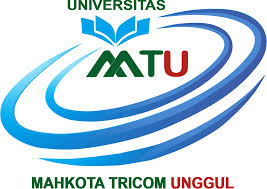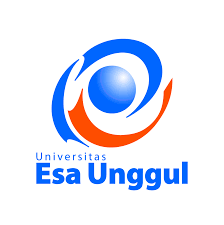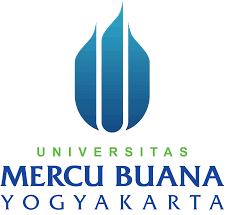Feasibility of Using Pepas Eheng Stone as Foundation Material for West Kutai Road
DOI:
https://doi.org/10.59890/g8dmyd25Keywords:
Abrasion, Compaction, Aggregate Absorption Specific Gravity TestingAbstract
The availability of mountain stone from Pepas Eheng Village, Barong Tongkok Subdistrict, West Kutai, is very abundant but has not been optimally utilized as a construction material. This study aims to test the characteristics and feasibility of crushed stone from the village as a road foundation layer material, in accordance with the 2018 Bina Marga General Specifications. Based on laboratory test results, this crushed stone meets the criteria as a class A foundation material with the following results: bulk specific gravity 2.68 gr/cm³, moisture content 0.59%, apparent specific gravity 2.72 gr/cm³, saturated specific gravity 2.69 gr/cm³, and abrasion 21.34%. In addition, the average fill weight of 1.62 gr/cm³ indicates this material is strong and stable enough to be used as a pavement foundation. The use of local crushed stone can reduce dependence on imported materials and support the sustainability of local resources
References
Abam, T. K. S. (2016). Engineering geology of the Niger Delta. Journal of Earth Sciences and Geotechnical Engineering, 6(3), 65-89.
Bahri. (2018). Bumi dan corporate social responsibility. http://jurnal.fordebi.or.id/index.php/home/article/view/44
Ézsiás, L., & Fischer, S. (2023). ALTERNATIVE USES FOR CRUSHED STONE PRODUCTS GENERATED TO MEET THE RAW MATERIAL NEEDS OF ASPHALT PRODUCTION IN HUNGARY. Scientific Bulletin of National Mining University, (5).
https://www.academia.edu/download/104868978/13419.pdf
Idrus, M. M., Singh, J. S. M., Musbah, A. L. A., & Wijeyesekera, D. C. (2016, July). Investigation of stabilised Batu Pahat soft soil pertaining on its CBR and permeability properties for road construction. In IOP Conference Series: Materials Science and Engineering (Vol. 136, No. 1, p. 012026). IOP Publishing.
mas'ad, bakri., ary, setyawan., syafi'i., 2013 "evaluation of the use of exsumilili aggregate as a top foundation layer material against damage to national strategic roads / route 40. issn 23390271, vol 1.no.1".
Matulessy, N. F., Desembardi, F., & Sukowati, D. G. (2022). Quality test of class A aggregate as foundation layer for roads using Saoka quarry material. Civil Engineering Scientific Journal (JIMATS), 1(1), 7-1
Ministry of Education and Culture. (2015). Widya Prabha Journal: the importance of understanding cultural heritage areas-no. 04/IV/2015. https://repositori.kemdikbud.go.id/18720/
Ministry of Public Works and Housing. (2018). General Specifications of Bina Marga 2018 (Division 5). Jakarta: Directorate General of Highways.
National Standardization Agency. (1990). Test Method on Sieve Analysis of Coarse Aggregates. SNI 03-1968-1990. Jakarta: National Standardization Agency.
National Standardization Agency. (1998). Test Method for Weight Content of Coarse Aggregate. SNI 03-4804-1998. Jakarta: National Standardization Agency.
National Standardization Agency. (2008). Test Method for Aggregate Wear with Los Angeles Machine. SNI 03-2417-2008. Jakarta: National Standardization Agency.
National Standardization Agency. (2008). Test Method for Liquid Limit with Cassagrande Apparatus. SNI 03-1967-2008. Jakarta: National Standardization Agency.
Purnama, R. (2017). Feasibility Analysis of Local Materials as Road Foundation Layer Materials. Thesis, Samarinda State Polytechnic.
Rini & Wayan. (N.D.). Investigation of the Characteristics of Mount Labora Stone, Tongkuno District, as a Class A Road Foundation Layer.
Rohmattun, S. (2024). Comparative analysis of planning structure for new road construction between flexible, rigid pavement and block paving in Kendal Industrial Area (Kik) (Case study: Jl. Wanamarta) (Doctoral thesis, Sultan Agung Islamic University Semarang).
Simatupang, T. (2015). Construction Material Testing Techniques. Second Edition. Jakarta: PT Gramedia Pustaka Utama.
soenarto sewojo bre. 1977 "analysis of the thickness of road foundation construction". directorate general of road construction. jakarta.
Susanto, J. (2019). Availability of local materials for road construction. Tekniksipil.com. Accessed on January 5, 2024, https://www.tekniksipil.com/artikel/material-lokal.
Susiam. (2022). Road Maintenance Rapid Response Unit (URPJ) Services at Nganjuk Regency PUPR Service. https://scholar.archive.org/work/ulxygjmxh5g7jjip5jwinuj7ly/access/wayback/https://ejournal.uniska-kediri.ac.id/index.php/Revitalisasi/article/download/2567/1597
tahir, fikri, m., 2011. "Laboratory testing system of ply mountain crushed stone as class a foundation layer". thesis. faculty of engineering d-iii civil engineering, halu oleo university.
White, D., & Vennapusa, P. (2013). Low-cost rural surface alternatives: literature review and recommendations.
Wiratama, B., & Sukiman, A. (2018). Aggregate wear testing with Los Angeles method. Journal of Indonesian Civil Engineering, 17(2), 45-55.











